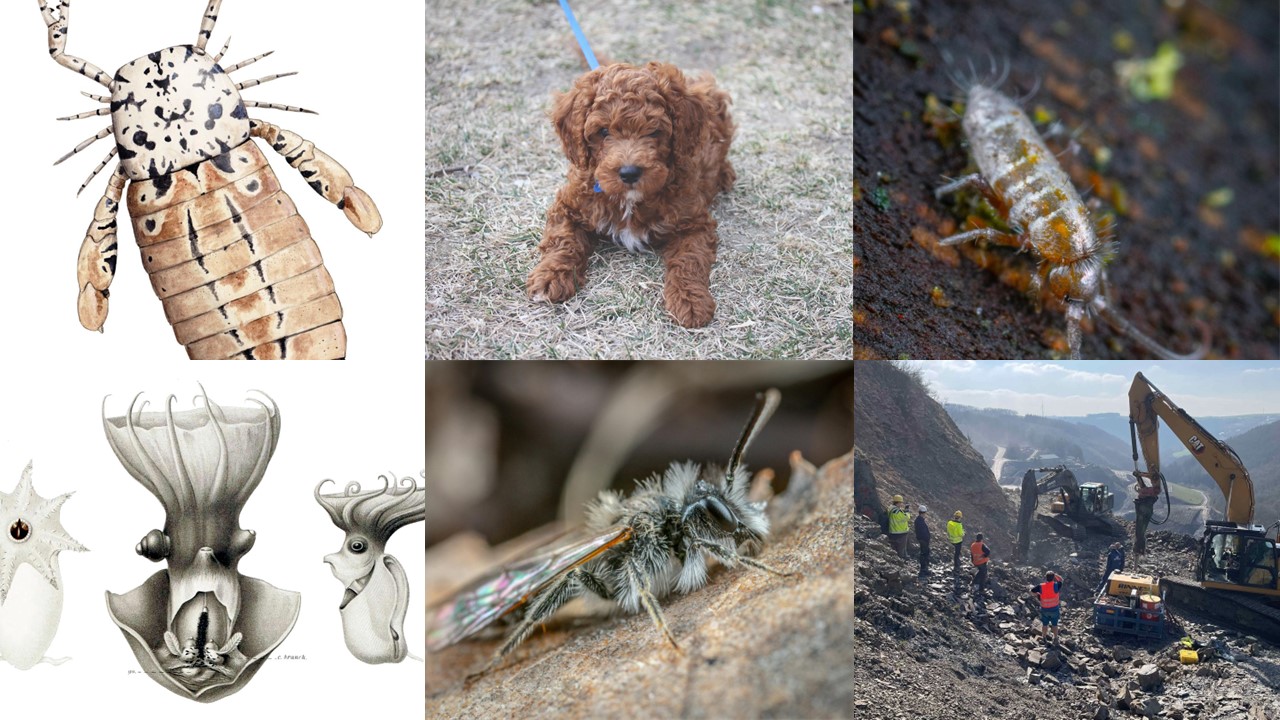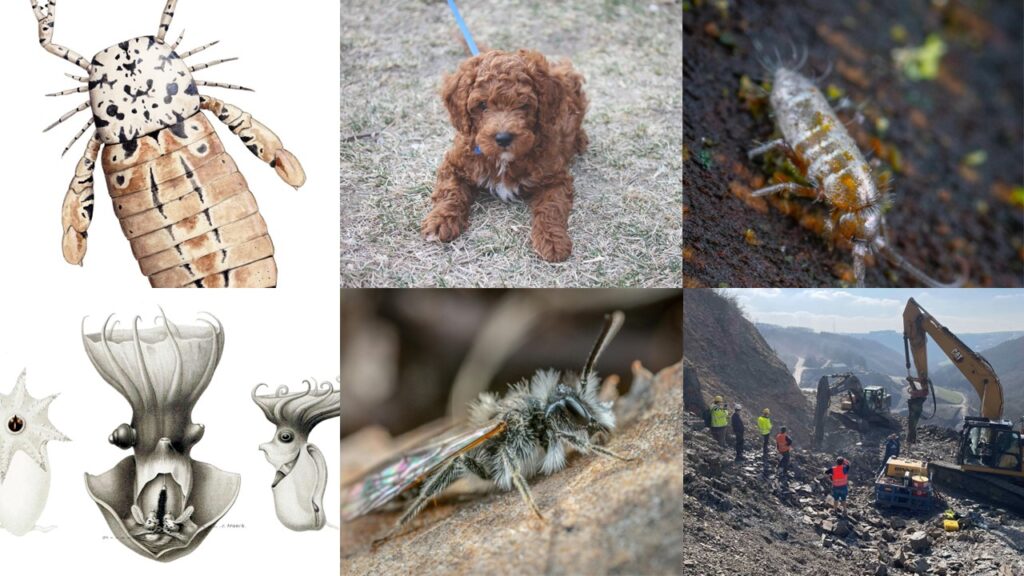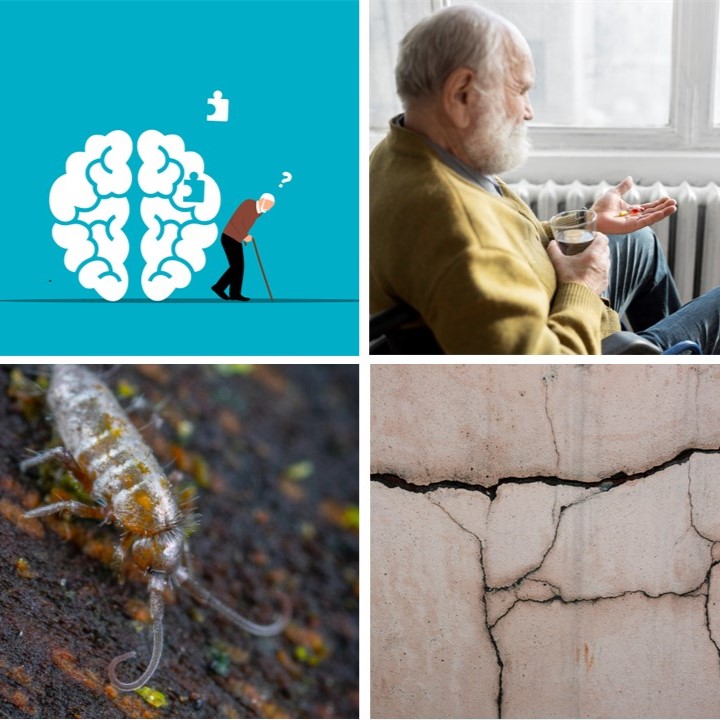10 selected Research Luxembourg results – March 2024
10 April 2024

Luxembourg News in Science & Research
New solutions for digital information storage; fragments of a giant scorpion; what science says about “hypoallergenic” animals; a new tool for studying the interaction between gut microbes and drugs; a more effective method for river health monitoring: here are the latest scientific news from Luxembourg.
Flickr; MNHN; Pexels (Egor Kam); NIH Image Gallery
This article was originally in French and German on science.lu
What is the link between diet, gut bacteria, and inflammatory bowel diseases?
Luxembourg Institute of Health (LIH)
Dietary fibers and their impact on gut bacteria play a crucial role in the development of inflammatory bowel diseases, including Crohn’s disease and ulcerative colitis. In an innovative study, a research group from LIH, in collaboration with the University of Michigan (USA), has shown that a fiber-deprived gut microbiome promotes the deterioration of the protective layer of the colon, leading to lethal colitis in genetically predisposed mice.
The mice harbored synthetic human intestinal bacterial communities. Key molecular mechanisms in the progression of these inflammatory diseases were also uncovered.
These findings open up new avenues for targeted treatment of patients with inflammatory bowel diseases.
To the press release / To the publication
New Solutions for Digital Information Storage
Luxembourg Institute of Science and Technology (LIST)
A new form of synthetic material could provide solutions to improve the storage density of digital information, as well as the energy efficiency of future computing devices.
Researchers from LIST participated in a study that created a unique artificial crystalline structure by stacking single-crystal layers of ceramic oxides at different angles to each other. This type of material is used in the design of digital memory devices (including hard drives).
The technique used is called “twistronics,” which involves deliberately rotating crystal layers at the atomic scale, thus creating unique artificial patterns. “What distinguishes this work is the ability to rotate one layer relative to the other, a process that has not been observed in nature,” explains Hugo Aramberri from LIST, one of the study’s co-authors.
This breakthrough, published in Nature, is crucial to meet the growing need for high-capacity data storage with low energy consumption.
To the press release / To the publication
Prehistoric Marine Fauna: New Insights into Cephalopods
Luxembourg National Museum of Natural History (MNHN)
Two recently published articles by the MNHN provide new insights into the feeding habits of prehistoric marine predators. The first discovery, six fish fossils containing remains of cephalopod shells in their stomachs, highlights a widespread feeding strategy called “teuthophagy,” indicating that these ancient predatory fish had a penchant for feasting on cephalopods. Cephalopods are marine mollusks with heads equipped with arms, such as octopuses or squids.
Additionally, a new species of cephalopod from the order “Vampyromorpha,” a vampire squid, was discovered during excavations of the lost ocean in Bascharage in May 2022. Unlike its modern deep-sea counterpart, Vampyroteuthis infernalis, this Jurassic squid hunted in shallower waters, a discovery that sheds light on the evolution of this species.
To the press release / To the publication
Energy Transition: What Promotes Sustainable Behaviour?
Luxembourg Institute of Socio-Economic Research (LISER)
Higher education is the only characteristic with a purely beneficial effect on sustainable behaviors and attitudes: this is the notable conclusion of the SOC2050 online survey, conducted by LISER in 2022-2023. The engagement of Luxembourgish citizens for a transition of society and the economy towards more resilience and sustainability was evaluated therein. The researchers also emphasize that awareness campaigns alone are not sufficient to change individual behaviors: according to them, concrete policy measures must be added to this. Other social characteristics such as age and income are correlated with both favorable and unfavorable behaviors for the environment.
The completion of the study enabled the purchase of €14,000 worth of carbon credits thanks to the contribution of participants who voluntarily waived their compensation. This money is intended to facilitate the construction of wells in several villages in northern Burkina Faso. In addition to providing clean water to hundreds of households, these wells will help reduce deforestation, offsetting up to 1,000 tons of carbon.
To the press release / To the publication

Spectacular Discovery: Remains of a Giant Scorpion Unearthed in Luxembourg
Luxembourg National Museum of Natural History (MNHN)
Nearly one and a half meters long! That’s the measurement suggested by the segments of a giant sea scorpion found during a scientific excavation conducted by the MNHN in the Rinnen quarry in Consthum, in the north of Luxembourg. The rock layer in which the scorpion was found is 406 million years old.
Dr. Ben Thuy, from the MNHN, details the particular nature of this discovery: “Discoveries of sea scorpions this large are very rare worldwide, especially when it comes to fragments preserved in anatomical connection.” However, the recovery of these fragments proved to be extremely challenging due to the hardness of the rock, the fragility of the fossil, and the presence of water at the excavation site.
To the press release (in French)
Can we improve river health monitoring?
Luxembourg National Museum of Natural History (MNHN)
DNA metabarcoding could soon become a more effective method for monitoring a river ecosystem compared to currently used methods.
This new technique allows for the analysis of environmental DNA from microscopic organisms called diatoms. These single-celled creatures, resembling plants, live in water and play an important role, akin to terrestrial plants, in producing a significant portion of the oxygen we breathe. The types of diatoms and their presence serve as indicators of a river’s health.
Until now, scientists have used microscopes to study diatoms, but DNA metabarcoding offers a significant advantage: increased sensitivity. This technique enables the detection of a much broader range of diatom species, including the rarest ones.
To the press release / To the publication
Pollinators: Surprising Results of a Study on Landscape Fragmentation
Luxembourg National Museum of Natural History (MNHN); Luxembourg Institute of Science and Technology (LIST)
In an increasingly human-modified landscape, it is essential to understand the consequences of habitat fragmentation on biodiversity. The high mobility of certain insects could help preserve their genetic diversity: this is one of the explanations put forward by researchers from MNHN and LIST to explain the results of a recent study on two vital pollinators (the mining bee and the bee fly).
The study showed that neither species showed signs of genetic differentiation or isolation due to landscape modification. Remarkable mobility would enable them to traverse even heavily fragmented landscapes.
“Genetic lag” is another hypothesis: according to researchers, it is possible that the time elapsed since landscape modifications have not been sufficient for genetic differentiation to become evident in these populations. More time and further research are therefore needed.
A new tool for studying the interaction between gut microbes and drugs
Luxembourg Centre for Systems Biomedicine (LCSB)
The intestine-on-chip HuMiX, a small device the size of a coaster that allows researchers to examine the cells and bacteria living in the human intestine, could potentially be paired in the future with a “liver-on-chip,” the equivalent of HuMiX for liver cells. By combining the two, the newly designed platform could mimic the connection between the liver and intestine. This device enables the study of complex interactions between gut microbes and pharmaceutical products, providing a representative alternative to animal models.
The LCSB study is a proof-of-concept validation study in which the metabolism of irinotecan, a widely used drug for colorectal cancer, is mimicked within the device. The study also demonstrates that the gut bacterium associated with colorectal cancer, Escherichia coli, alters the metabolism of irinotecan, an interesting discovery in understanding this type of cancer.
Alpine Invertebrates Depend on Snow as Seasonal Natural Habitat
Luxembourg National Museum of Natural History (MNHN)
Several populations of alpine springtails (small invertebrates that play a significant role in the organic matter cycle) have been documented in the snow of the Adamello-Brenta Natural Park in Italy. The species active in the snow have never been studied before in the southern Alps.
The surface of the snow hosts specialized springtails active in winter, living in large colonies and using this seasonal habitat for feeding, dispersal, and migration.
Studying such an ecosystem is even more crucial in the current context: researchers’ work on these tiny creatures underscores the importance of assessing life diversity in this very particular habitat, threatened by climate change.
To the press release / To the publication
Are There Truly “Hypoallergenic” Dogs?
Luxembourg Institute of Health (LIH); Centre Hospitalier de Luxembourg (CHL)
The breeds marketed as such evidently are not: that’s the finding of an international study conducted by LIH in collaboration with CHL. Their work challenges the concept of “hypoallergenic” pets, highlighting that breeds like the Sphynx cat or the Labradoodle produce major allergens. Pet allergy affects 10 to 14% of individuals in Europe and the United States, with a high risk of developing clinical symptoms such as allergic rhinitis or asthma.
Researchers also extensively studied the horsehair of the American Bashkir Curly breed and concluded that there is no scientific evidence to support its supposed hypoallergenic status.
This type of work underscores the crucial importance of basing any scientific claim on solid evidence. As for the quest for hypoallergenic pets, it evidently requires further research.
To the press release / To the publication
Author: Diane Bertel
Editor: Lucie Zeches (FNR) ; Hélène Jacuszin (Research Luxembourg)








